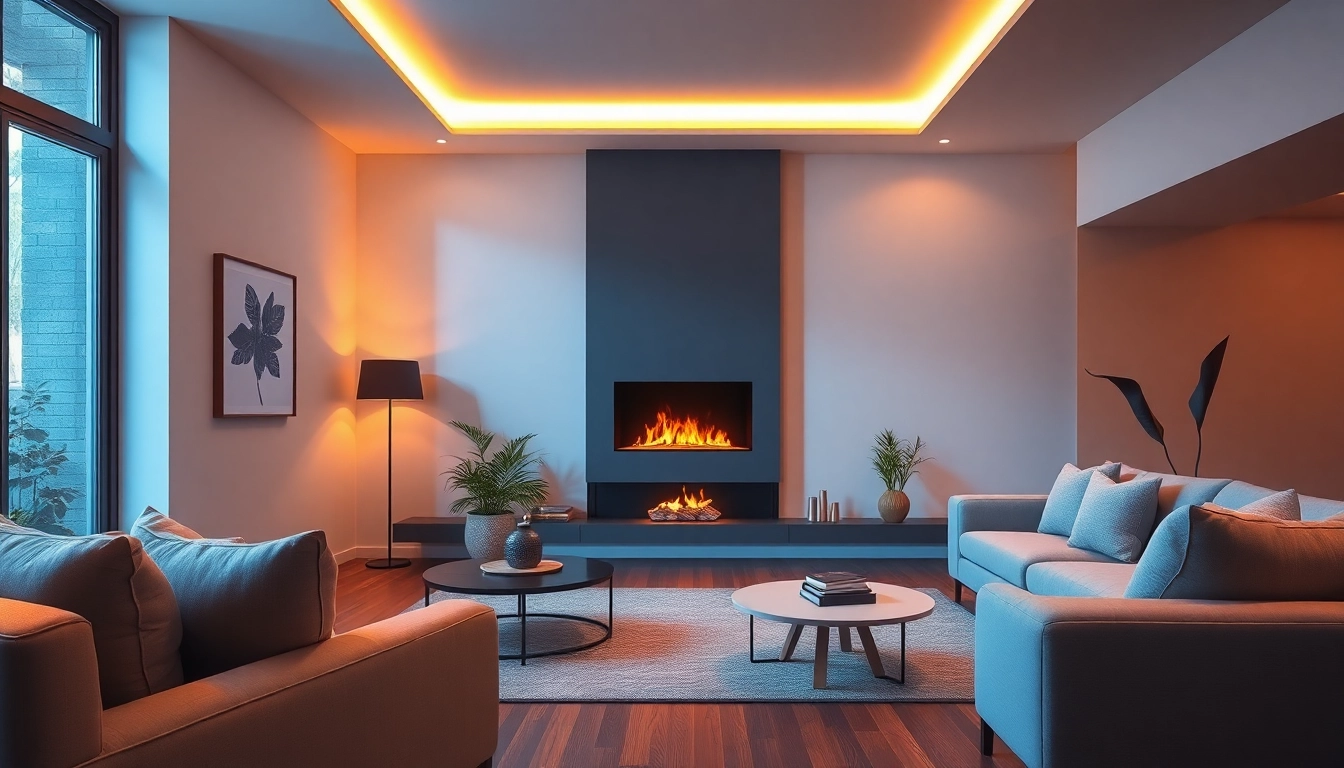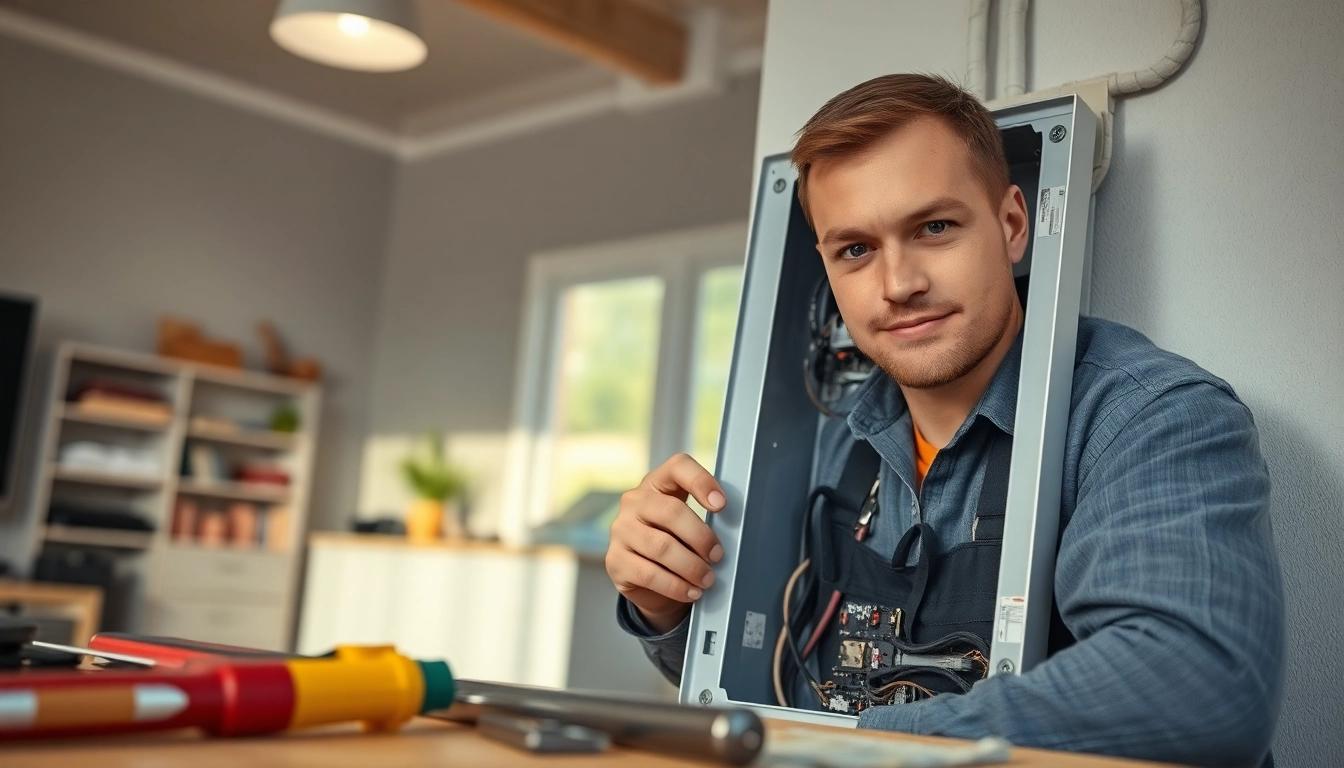Understanding Water Vapor Fireplaces
In an era where environmental concerns are paramount, the water vapor fireplace emerges as a groundbreaking solution in the world of home heating and ambiance. These innovative devices make use of ultrasonic technology to create a stunning visual display that mimics the illusion of fire without the associated hazards of traditional fireplaces. This article delves into the nuances of water vapor fireplaces, exploring their functionality, design variations, maintenance needs, and comparisons with conventional heating solutions.
What is a Water Vapor Fireplace?
A water vapor fireplace is an advanced electric fireplace that generates an image of flames using water vapor. Unlike traditional wood or gas-burning fireplaces that produce real fire, smoke, and combustion gases, water vapor fireplaces utilize a unique mechanism to create a mist that, when illuminated by LEDs, resembles flames. This water vapor is created through ultrasonic technology and is safe for indoor environments, making it an attractive option for families and homeowners concerned about safety, especially around children and pets.
How Do They Work?
The working principle of water vapor fireplaces is both simple and sophisticated. When activated, the fireplace employs an ultrasonic transducer, which generates high-frequency vibrations to break water down into fine droplets. These droplets are released into the air, creating a mist. LEDs positioned behind or around the mist emit light that refracts through the water vapor, producing a lifelike flame effect. This technology allows users to enjoy the aesthetic appeal of a fireplace without actual flames and combustion byproducts, such as soot and carbon emissions.
Key Benefits of Water Vapor Fireplaces
- Safety: Water vapor fireplaces do not produce real flames; thus, they are cool to the touch and pose no fire hazards. This is particularly beneficial in households with children and pets.
- Eco-Friendly: With zero emissions, these fireplaces are a greener alternative to traditional models. They help maintain indoor air quality without polluting the environment.
- Ambiance without Heat: The mesmerizing effect of flickering flames adds ambiance to any room without increasing the temperature, making them ideal for use in warmer climates or during summer months.
- Low Maintenance: These units generally require less maintenance than wood or gas fireplaces. They have minimal cleaning needs and no ash disposal.
- Versatile Designs: Available in various styles and sizes, water vapor fireplaces can fit seamlessly into modern, traditional, or even industrial decors.
Types of Water Vapor Fireplaces
Water vapor fireplaces come in several configurations, allowing homeowners to choose the model that best fits their interior design and lifestyle. Each type offers unique advantages and can cater to various aesthetic preferences and functional requirements.
Freestanding Models
Freestanding water vapor fireplaces are portable units that can be placed anywhere in a room. They do not require installation in the wall or a chimney, making them flexible and easy to reposition. Most freestanding models have a sleek, contemporary look, making them ideal for modern interiors. However, they can also be found in designs that mimic traditional fireplaces, appealing to classic tastes.
Wall-Mounted Variants
Wall-mounted water vapor fireplaces provide a space-saving solution for homes with limited floor space. These units are securely attached to walls and can be incorporated as focal points in living areas. They come in various shapes, including linear and square designs, and can often be placed above furniture or in tight corners. The installation process is relatively straightforward, requiring minimal modifications to walls.
Fireplace Inserts: Customization Options
Water vapor fireplace inserts fit into existing fireplace openings, allowing homeowners to upgrade traditional models without extensive renovations. These inserts transform conventional fireplaces into modern, efficient, and safe units. Users can choose from various customization options, including media and frame selections that enhance the overall look of their fireplace space. Inserts can also incorporate additional features like heating capabilities, further adding to their versatility.
Installation and Maintenance
While water vapor fireplaces are relatively easy to install compared to traditional units, there are important steps and considerations to ensure they operate optimally. Additionally, understanding maintenance requirements is crucial for long-term functionality.
Installation Steps for a Water Vapor Fireplace
- Choose the Location: Determine the ideal location for the fireplace based on aesthetics, functionality, and accessibility to power sources.
- Prepare the Site: Clear the area of debris and ensure the surface is level, particularly for freestanding units. For wall-mounted designs, measure the height and width of the unit to mark installation points.
- Secure Power Supply: Ensure there is an electrical outlet nearby or employ a professional electrician to install one, if necessary. Units require a standard electrical connection to operate.
- Mount the Unit: Follow the manufacturer’s guidelines to install the fireplace, which may involve attaching brackets for wall mounts or placing the unit securely for freestanding options.
- Fill the Water Reservoir: Before turning the unit on, fill the water reservoir according to the manufacturer’s instructions to ensure proper mist production.
- Startup and Testing: Switch on the unit, observe the effects, and test its functionalities (like flame height adjustments) to confirm everything works correctly.
Regular Maintenance Requirements
Proper maintenance is essential to keep your water vapor fireplace in optimal condition. Regular cleaning and care will enhance performance and longevity. Here are some key maintenance tips:
- Water Quality: Use purified or distilled water to prevent mineral buildup in the reservoir and misting system.
- Cleaning: Wipe down the fireplace surfaces regularly with a damp cloth to remove dust and debris.
- Inspect Components: Periodically check for any signs of wear or damage, especially the misting system and electrical connections.
- Empty and Refill Reservoir: Depending on usage, a weekly refill of the water reservoir might be necessary. Ensure to change the water entirely at least once a month to maintain hygiene.
Troubleshooting Common Issues
While water vapor fireplaces are generally reliable, users may occasionally encounter issues. Here’s how to troubleshoot some common problems:
- Low Mist Production: Check the water level; refill if necessary. Ensure the water used is distilled or purified.
- No Flame Effect: Ensure the unit is adequately powered and that the LEDs are functioning properly. If not, a replacement may be necessary.
- Inconsistent Operation: This may result from electrical interruptions or insufficient water supply. Restart the unit after confirming proper connections and water levels.
Comparing Water Vapor Fireplaces with Traditional Models
As consumers weigh their options for home heating and ambiance, understanding how water vapor fireplaces stack up against traditional models is essential. Each type has its pros and cons concerning efficiency, safety, aesthetics, and impact on the environment.
Efficiency and Energy Consumption
Water vapor fireplaces are designed to operate on standard electrical currents, leading to early concerns regarding their energy consumption. However, these models are typically more energy-efficient than gas or wood-burning fireplaces when used primarily for ambiance. Users do not have to consider the added utilities often associated with traditional fireplaces, such as gas lines or wood storage, thereby leveraging a more straightforward and less resource-intense system.
Safety Aspects and Environmental Impact
One significant advantage of water vapor fireplaces is their safety profile. Without real flames, there is no risk of burns, no combustion gases are released, and they help maintain better indoor air quality. Several traditional fireplaces emit harmful emissions that can lead to poor air quality inside the home and surrounding environment.
Aesthetic Considerations: Visual Differences
Aesthetic preferences greatly influence fireplace choices. Water vapor fireplaces offer a modern, sleek appearance that can be stylized to fit various home decors. While traditional fireplaces exude a classic charm that appeals to many homeowners, water vapor models can be designed with programmable LED effects and customizable mist heights, offering options that traditional models cannot match.
Making the Right Choice
With various options on the market, finding the perfect water vapor fireplace for your home involves considering several critical factors. From understanding your space requirements to reading customer reviews, a comprehensive approach will ensure you make an informed decision that meets your needs.
Factors to Consider Before Purchase
- Room Size: Assess the space where the fireplace will be installed to select an appropriately sized model.
- Design Preference: Choose between freestanding, wall-mounted, or insert styles based on existing home aesthetics and personal tastes.
- Budget: Set a budget considering the cost of the unit and potential installation or setup fees.
- Features: Look for models that offer customizable settings and additional functionalities, such as heating options or remote control accessibility, for added convenience.
Customer Reviews and Recommendations
Before finalizing your purchase, it is wise to consult reviews and recommendations from other customers. Their experiences can offer valuable insights regarding the benefits and drawbacks you might not have considered. Look for feedback on real-world performance, installation ease, and long-term satisfaction. Websites often offer review platforms where users share firsthand experiences, helping you gain a more nuanced understanding of the product you are considering.
Where to Buy Your Water Vapor Fireplace
When looking to purchase a water vapor fireplace, explore diverse sources including home improvement stores, specialized fireplace shops, and online retailers like Amazon or dedicated fireplace brands. Ensure that you analyze pricing, warranty options, and customer support before purchasing to guarantee the best value.
In conclusion, water vapor fireplaces present a unique and compelling option for those seeking to blend safety, environmental sustainability, and aesthetic appeal in their homes. By understanding their functionality, installation procedures, and long-term benefits, consumers are well-equipped to make educated decisions about integrating these innovative heating solutions into their living spaces.



